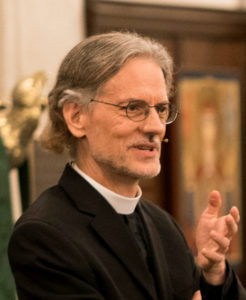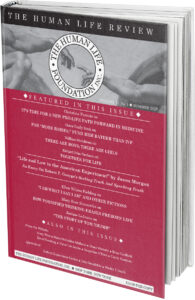When a Monk Dies
In my last reflection here, I argued against euthanasia and physician assisted suicide—medically available options in an increasing number of countries, and states in the U.S. But as with many other unethical practices, simply making the case for their wrongness is not enough. We need also to show what’s good about letting death come to us on its own terms.
L. S. Dugdale, a physician and author of The Lost Art of Dying, mostly focuses on the ways the assumptions behind modern medicine keep doctors from being able to answer questions many patients raise. If someone asks about her disease, the doctor can offer alternative treatment plans, indicating in a rough way the potential benefits and drawbacks of each. But if she asks, “Why am I dying?” or “How can I live the rest of my life in a way that prepares me for death?,” she is seeking answers that doctors have not been trained to provide and, being very busy professionals, rarely have time to ask themselves.
When there were fewer medical options, it was easier to perceive that death is waiting for all of us at the end of our lives, easier to grasp that death is something we should prepare ourselves for. Medicine now has so many possible treatments at its disposal—it can keep our attention focused on how chemo or radiation or an upcoming surgery might fight off our disease, might give us more time to live. The metaphor is of a battle; life turns into a fight against disease. Medicine keeps us focused on the fight. Then when there are no treatments worth pursuing, medicine offers drugs to sedate us. At this point, while we don’t have pain, or as much pain, we no longer have the strength to think about the inevitable coming event, the one we have avoided thinking about so far.
Implicitly, the pro-euthanasia movement is a protest. Rather than going through all this medical stuff, we should be able, advocates say, to exercise a “right to die” in a manner of our own choosing. Rather than enduring yet another treatment that may have only a slight chance of curing us, or being sedated and reduced to a twilight existence, we should have the choice of insisting “Enough! I want to die now!”
What Dr. Dugdale brilliantly shows is that either of these options is a denial of our mortality: Die-in-a-hospital while doing all we can to fight off the disease (including obliterating our awareness of the approach of death) and let-me-take-death-in-my-own-hands and end it all now are both a refusal to see, and experience, something very old and profoundly human. They are both signs of a world that has lost any sense of the art of dying.
What is the good in practicing the art of dying? This is what we must be able to articulate, to show others—indeed to practice ourselves. It will not do simply to protest against euthanasia and the denial of death implicit in our current medical practices. We need to propose an alternative, and we need to be clear about why what we propose is good; why it is a better way to live as well as to die.
Which leads me to A Time to Die, a remarkable book by the French journalist and author Nicolas Diat (published in English translation by Ignatius in 2019). About a decade ago, Diat visited several European monasteries, specifically hoping to learn how monks die: What happens when they get ill and approach death? How is that moment of death understood? What happens afterwards?
To seek out monasteries with these questions in mind was a brilliant move, because if Western culture at large has lost sight of the truth about human mortality, monasteries are likely to be places where at least some of this truth survives. Diat begins his book recalling his time at the Abbey of St. Mary of Lagrasse in Southern France. Early in his visit, he takes a walk on the grounds and stumbles upon the monks’ cemetery, where he finds a recently dug grave. It seems macabre to him, and he pushes the scene out of his mind. Back at the monastery, he asks about an invalid monk he saw in a wheelchair in an arcade outside. Diat learns the monk’s name, that he is 36 years old, and that he is dying of multiple sclerosis. To his discomfort, he also learns that the open grave he had seen had been dug for the young man.
How this monk was cared for; how younger monks were assigned to attend to his needs; how he still had a place in chapel whenever he could join in the prayers; how it could be taxing to be with someone who is dying—these are things that varied from case to case. But they are never easy. The monks do not want to die in a coma, or in a deeply sedated state. And they will not die alone: They have brothers who will be with them to the end.
All monks are trained to be humble, or at least have humility forced upon them. Their most important work is prayer and care for others as God has given it to them. And so they do not resent ministering to the dying among them. Still, Diat writes, they may well pause outside the door of a sick brother; take a deep breath before they open the infirmary door; or perhaps on occasion even wish they were somewhere else.
That this is good, that it is in fact beautiful, is complexly and lovingly portrayed by Diat. It seems to me that, as a first step, if we want to learn what’s good about holy dying, if we want to learn how to accept death into our life—something neither the medical-industrial complex nor euthanasia proponents can teach us—we could pay attention, for instance, to how dying happens in old monasteries today.
What might we find? It’s beyond this column to specify, and even after we ponder their practices it may still elude our ability to spell it out. But I think there is a clue. Life in monasteries is grounded in the desire for God and the hope for bodily resurrection. Neither that desire nor that hope (it seems to me) makes dying an easier experience. But there is a sort of through-line from them that brings strength to bear it, even to see that death is somehow humanly good.










